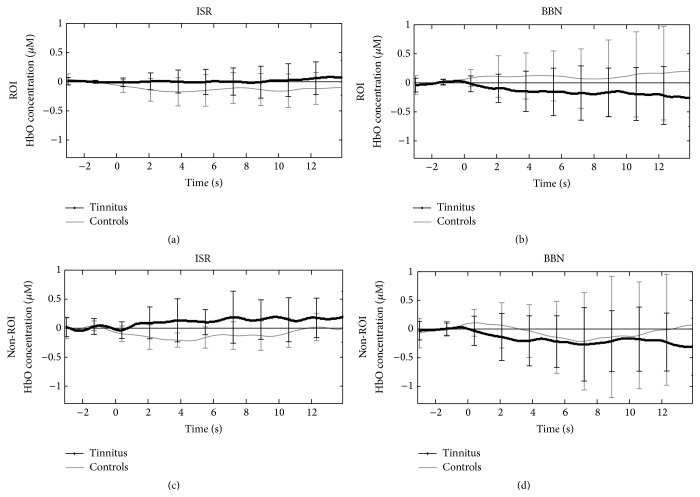Figure 4.
Mean oxy-hemoglobin (HbO) concentration traces versus time (seconds) from ROI and non-ROI under conditions of silence (interstimulus rest; ISR) and stimulation (broadband noise; BBN) between tinnitus and control groups. The unit of concentration is micromolar (μM). Standard deviations at each time point of the traces were calculated using the equation: with σ = standard deviation; a = each value in the population; = the mean of the values; N = the number of values. The figure represents brain activity during the 4–18-second time period in the respective testing paradigm. In the figure, 0 corresponds to 4 seconds of the 18 sec period. Left hand column demonstrates maintained or increased HbO concentrations in tinnitus participants (dark lines) relative to control (gray lines) in both ROI (a) and non-ROI (c) under conditions of silence (ISR). Note the deactivation in controls in both regions during ISR. Right hand column demonstrates the effects of BBN on HbO concentration in ROI (b) and non-ROI (d) in both groups. Note the robust suppression of HbO in tinnitus in response to BBN that continues throughout the recording block ((b) compared to (a)) with the as expected increases in control HbO indicative of auditory stimulation in the intact circuit. BBN also suppresses HbO in non-ROI ((d) compared to (c)) that is also maintained across the recording block suggesting residual inhibition in nonauditory cortical regions in tinnitus subjects. All traces are marked with standard errors calculated for the 4 channels (2 on the right and 2 on the left for both ROI and non-ROI).

